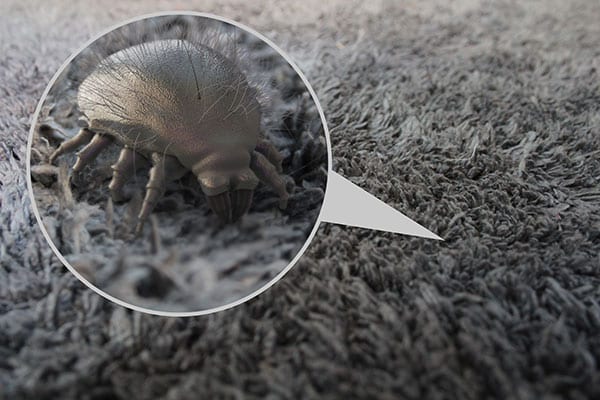Reproductive Behaviour
All species of mites have three stages of development within its life cycle which are the Egg, the Nymph, an Adult. Their eggs are minuscule which aren’t visible to the naked eye and depending on the species of mite, egg locations will vary. After hatching from their eggs the nymphs will undergo a series of moults over a duration of days before becoming an adult. Adults will also vary in colour and size depending on their species.
Female mites are capable of laying up to 500 eggs (in batches depending on the species) in its lifespan that can hatch in a number of days. Depending on room ambience, they can approximately live up to 6-12 months giving them a long enough duration for an infestation to become uncontrollable. Giving their size, they are highly capable of gaining access to minuscule gaps of food or product packets causing contamination and the presence of other specific mites can cause harm, allergic reactions and severe discomfort within a dwelling.

Identifying a Infestation
There are generally three ways of identifying a Mite infestation which is listed below:
Physical Sightings
The easiest way of determining an infestation is multiple or continuous Sightings of Mites as they tend to move as a social group. A thorough check should be carried out by if not yourself, than a specialist if a clustered sighting has been made.
Bite Marks
Mite bites can irritate the skin and cause intense itching. The bites start as Red Welts then turn to Small Pimples though they can be confused with bedbug bites. These usually appear over the upper body(shoulders, face, neck and arms).
Allergic Reactions
Most people may have severe Allergic Reactions to the presence of mites droppings, skin casts and their dead carcasses. These reactions may be in the form of skin rash, respiratory difficulties and convulsive sneezing. Consult your doctor if these symptoms arise.
Identifying Mites
Identifying a single mite is extremely difficult to do giving that their microscopic size is almost invisible to the naked eye, but because of their social characteristics they are easier to sight when travelling amongst each other. An adult Dust Mite is approximately 0.2 – 0.4mm in length and their physical appearance is one of a eight legged Arachnida with an rounded-shaped body and commonly appear as transparent or light individually or amongst each other. Other species of mites will vary in colour and size but will all have a similar characteristics.
House mites prefer the moisture and warmth whether produced by a human/animal bodies or if its the natural ambience of the room they’re occupying. In a premises they may originate from a loft space but be seen in locations like Bedding, Mattresses, Soft or hard furnishings, Soft toys, Carpets, Kitchen surfaces and Pantry surfaces.
